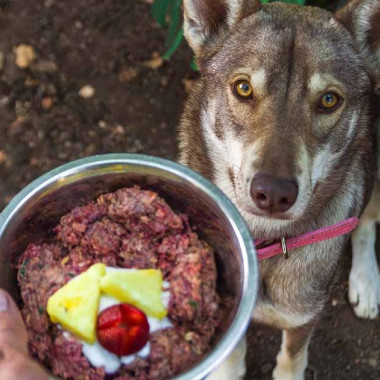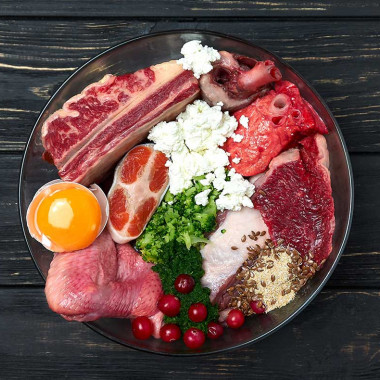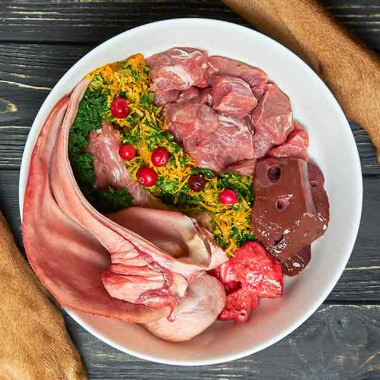A natural diet is suitable for all age groups of dogs, from very young puppies to senior dogs. Of course, there are some differences in the transition to BARF for a puppy, an adult, or an older dog. The longer a dog has been fed commercially produced food, the more challenging and time-consuming the transition to a natural diet may be.
In this article, you will learn about how to feed a puppy with a raw diet. In other articles, you will find a more detailed description of the transition to BARF, calculation of the feeding portions, and their composition.
Transition from Kibble to BARF for Puppies
You can feed your puppy BARF right from the start when you bring it home. Breeders who feed their dogs raw food even give minced meat as the first complementary food to puppies. These dogs are already used to a raw diet. However, if the puppy was initially fed kibble and you want to start feeding it raw, it is better to read up on the proper way to transition.
For small puppies, the transition to BARF is usually easier because they adapt more quickly to the new type of food. It is best to start with easily digestible meats, such as chicken, turkey, or veal. Vegetable and fruit supplements should be given to puppies grated, pre-frozen, or steamed to make them as digestible as possible. At first, you can give ground bones, and later whole ones. Ideal bones are chicken carcasses, necks, and wings. The size of the bones should always be adjusted to the size and capabilities of the dog.
Calculation of the Feeding Portion for a Puppy
Puppies grow quickly, and for proper development, they need an adequate amount of the right nutrition. The daily feeding portion for a puppy is therefore calculated at 4 to 6% of its ideal body weight.
Equally important is the number of feedings per day. For small puppies, the daily portion should be divided into up to 5 servings, but as the puppy gets older, fewer servings will suffice. We recommend sticking to the following schedule:
Age | Number of Feedings |
2 months | 5x daily |
3 months | 4x daily |
4 - 5 months | 3x daily |
6 months | 2x daily |
Composition of the Feeding Portion for a Puppy
The feeding portion for a puppy should contain approximately 50% meat, 30% bones, and 20% supplements. Puppies are given slightly more bones than adult dogs to ensure they get enough calcium during the growth and teething period. However, this should not be overdone, as too many bones could cause constipation.
Just like with adult dogs, there is no need to fear the transition to a raw diet for puppies. By following the approximate ratios and providing a varied diet, your puppy will get everything it needs.
In our other articles, you will find more detailed information about feeding dogs of different age categories with BARF, artificial rearing of puppies, and feeding pregnant bitches.










